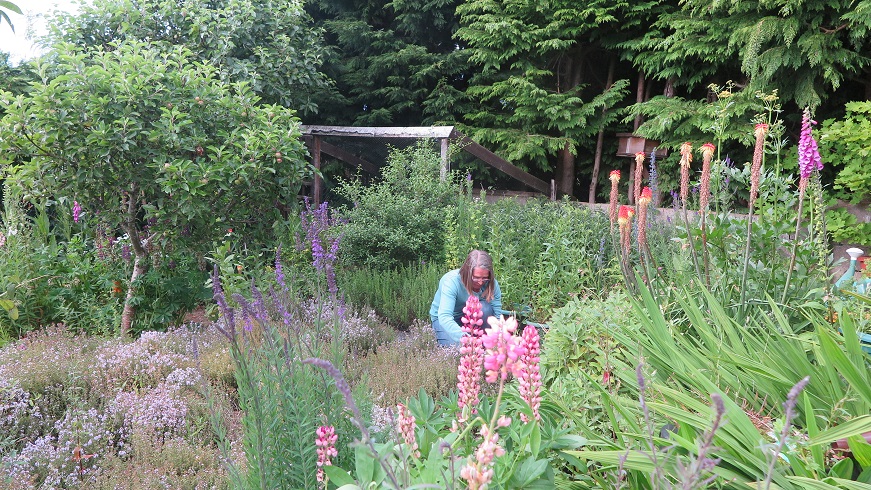
This has been a relatively restful week with the weather too wet, windy and wild for beekeeping. Today though it is warmer outside the house than indoors, and I’m wearing my fleecy housecoat on top of my clothes. I would be outside walking if the rain wasn’t coming down horizontally with a strong west wind behind it.
The bees are working their way through their spring stores so just as well that I only harvested honey from my strongest colony with 3 supers. They are not the only animals hungry this week and little red squirrel is so keen on the peanuts that he lets me get within a few feet of him. Any closer and he moves up the branch a bit and slashes his tail up and down through the air, angrily chittering through his teeth at me. I made a special trip to our nearest garden centre to buy a large bag of peanuts for him and his three chums that have claimed our garden as their new best restaurant. When I neglected to refill either the special squirrel feeder or the bird feeders, Linton was more than surprised one very early morning to see a little red squirrel face and front paws pressed against the patio window as if in protest. This has happened twice but each time Linton didn’t have his camera handy to shoot the epic scene.
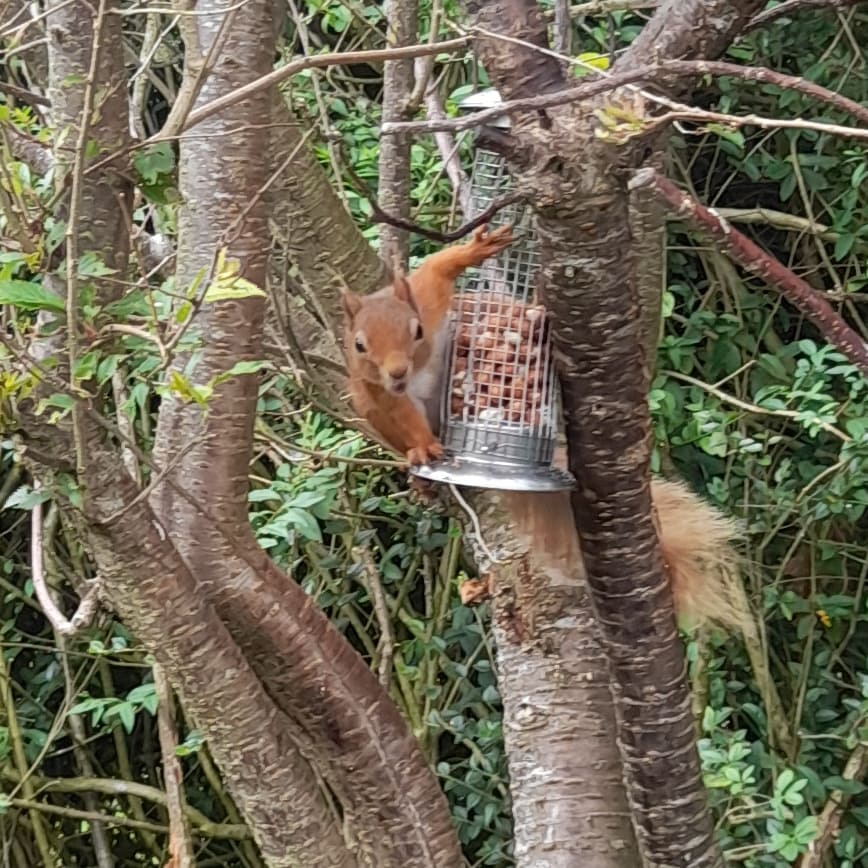
Honey Orders.
I sell honey at the front door, or to my small group of loyal customers which means no pressure to supply when there is a dearth of honey. My strategy is to store honey in secure food grade buckets and always keep some in reserve for my regular customers. Orders came through all at once last week so I worked on jarring up last year’s summer honey and delivering it locally this week.
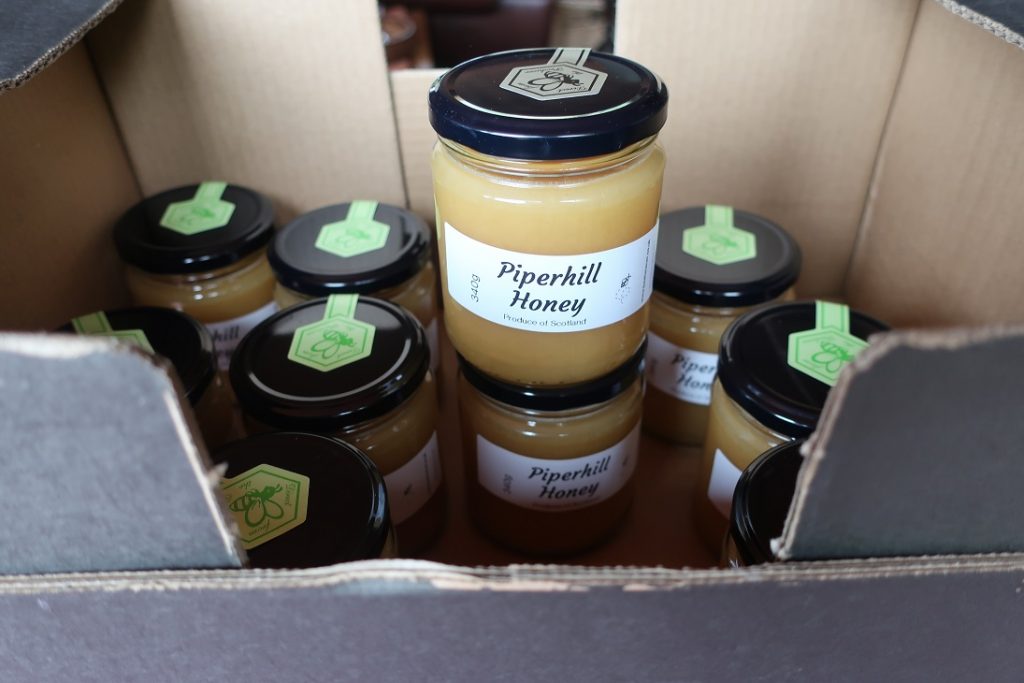
Processing Wax,
Good friends are moving south very soon and Maria had some wax cappings to turn into candles but it needed a bit of work done on it and she didn’t have time. I got my bain Marie out and turned it into golden “ingots”.
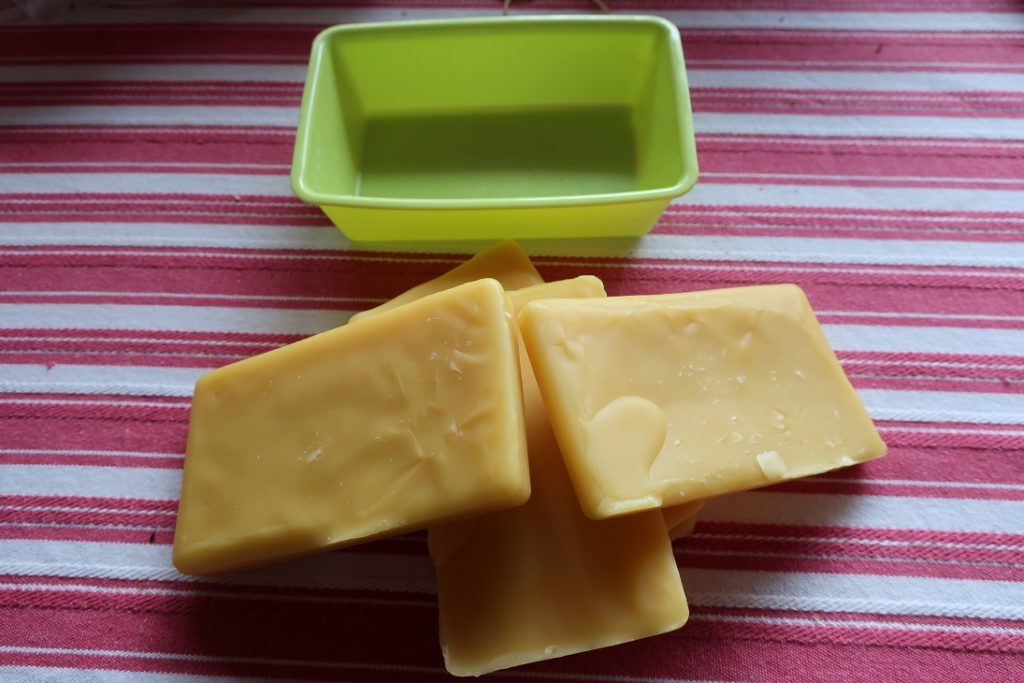
Since I had the equipment out and the kitchen was in a mess anyway, I worked on cleaning and filtering the wax blocks rendered down in the solar wax extractor during the warmer days of early summer. I filtered the wax through 2 layers of thick tights and let it set in these silicone baking containers. I’ve got an old plastic table cloth that works a treat protecting the kitchen work top and the mess was minimal.
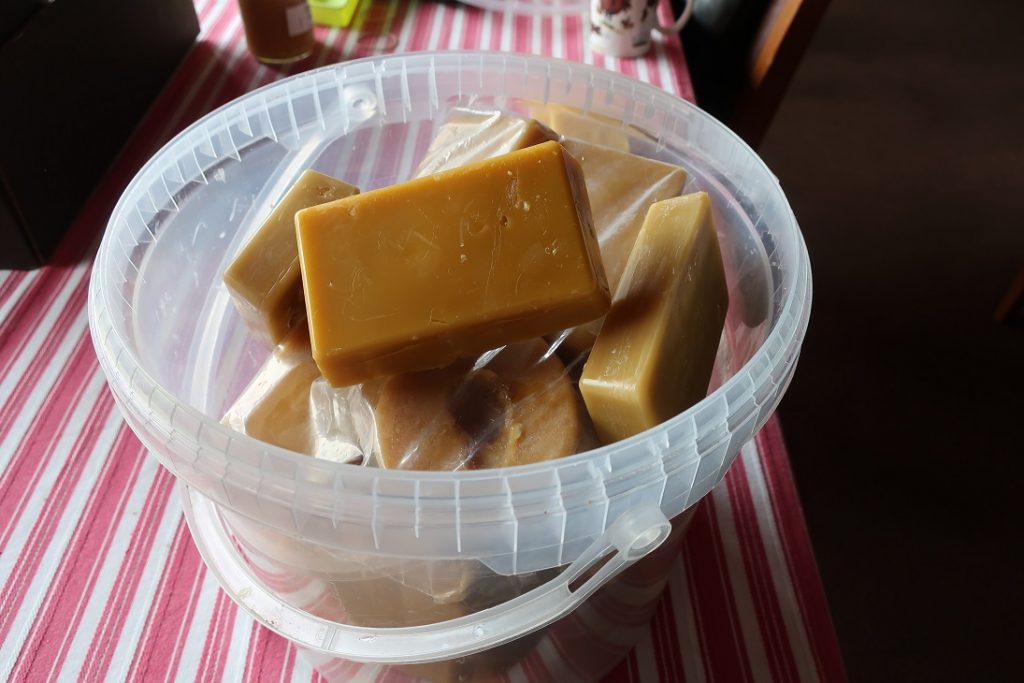
Stocking the First Aid Kit.
Having once had a flourishing vegetable patch, beekeeping now takes up all my time and the garden is a minimal care set-up with all plants having some value for pollinators. I pull the obvious weeds now and again when I have a moment to spare but the garden looks after itself and is pretty wild. Some plants arrive on their own accord like the giant Echium spp seen below on the left beside the uninvited but highly welcomed purple toadflax. I collected the yellow verbascum seeds a couple of years ago and they grow too wherever they please.
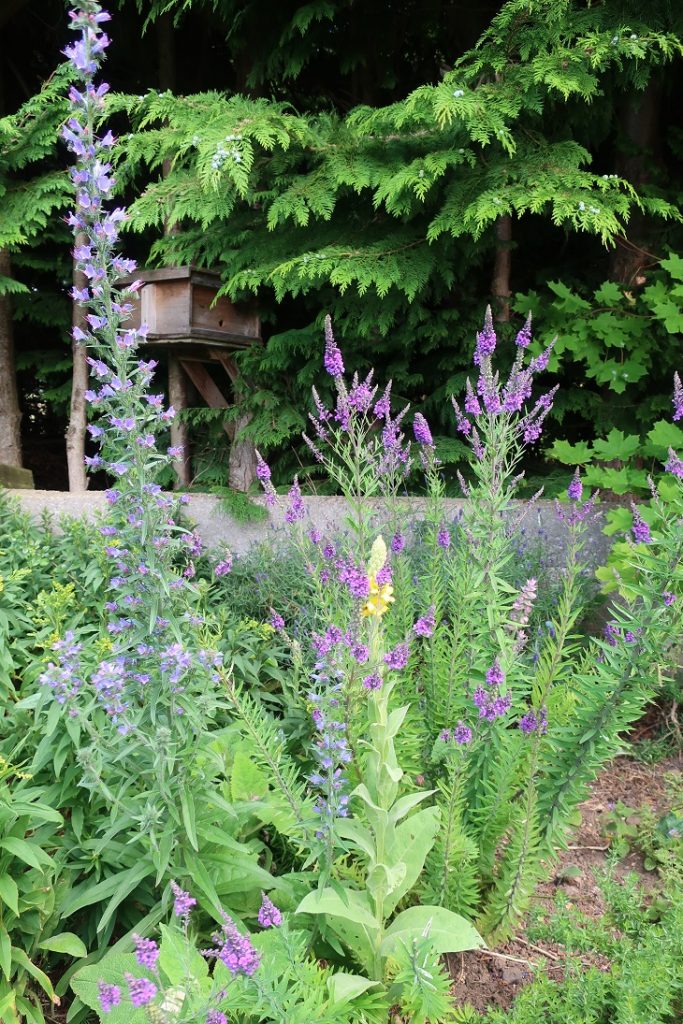
I had a bit of a gardening accident the other day as I was following advice from gardening expert Anna Maria who instructed me to lay down cardboard to smother the ground-elder/ bishop’s weed, Aegopodium podagraria, in the side apiary. I’m trying to reclaim a bit of garden for planting more useful flowers, and bit by bit this is taking effect.
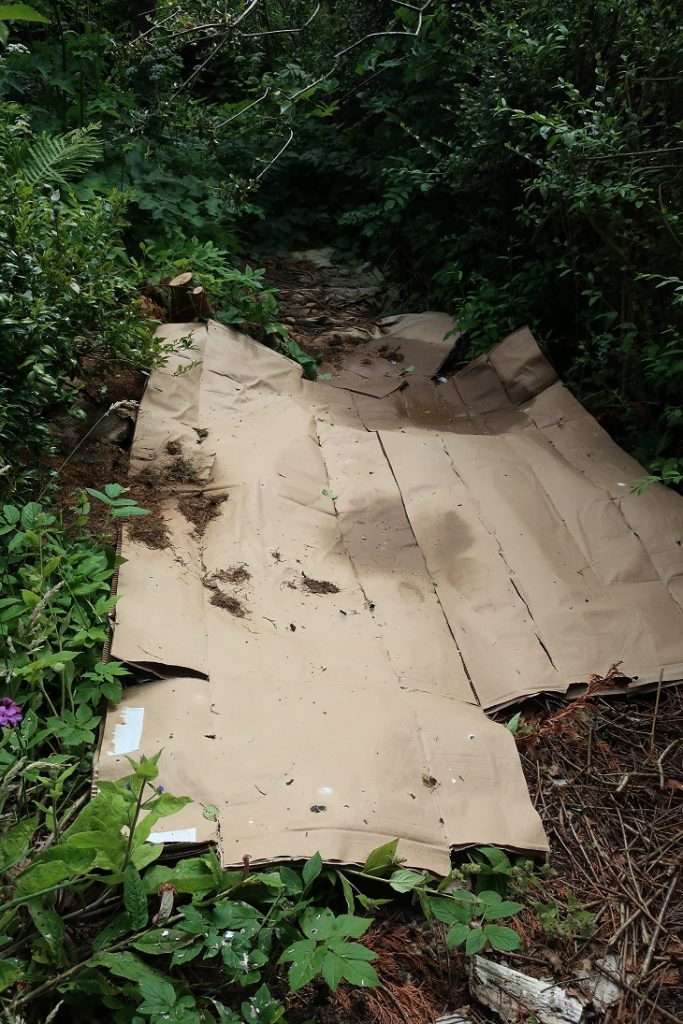
However, as I was jumping up and down to flatten the box I got too close to a recently pruned spear-like branch of privet which tore up almost an inch of skin on my right forearm. Despite having been a nurse, I’m not keen on the sight of blood and was very relieved that Linton was still at home so I could sit down and let him deal with the clean up job. An hour later he was flying off to work for 17 days.
Is your first aid kit up to date and well stocked? Ours wasn’t so it was a challenge dressing the wound. After rinsing the cut well under the tap, Linton applied some heather honey from a fresh jar to the wound and then a plaster and bandage to stop the bleeding. It stung a bit, but, amazingly, 4 days later this wound has almost healed. Needless to say, my shopping trip to town yesterday involved stocking up on lots of dressings and bandages.
Reclamation.
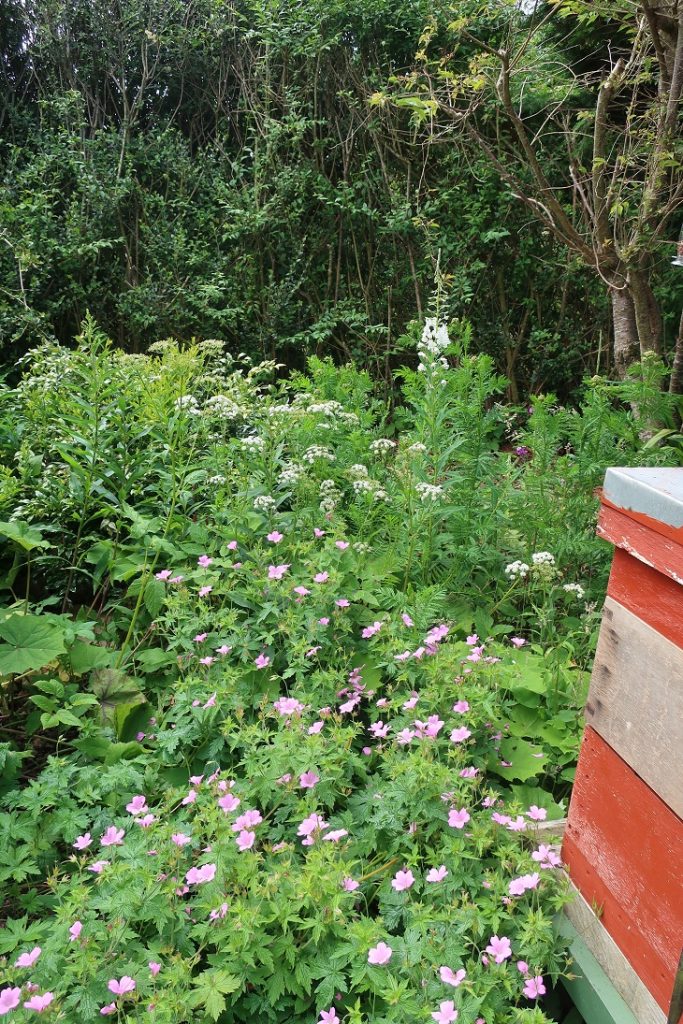
A couple of years ago this was all covered in ground-elder. You can still see some and, their white flowers are pretty and useful to pollinators but they strangle the plants that I want to see more of. Did you notice the white willowherb? Martin Bridges gave me some from his garden before he moved to Devon a few years ago and all the bees love it. The pink rosebay willowherb is flowering early this year (at least 3 weeks earlier than usual I think).
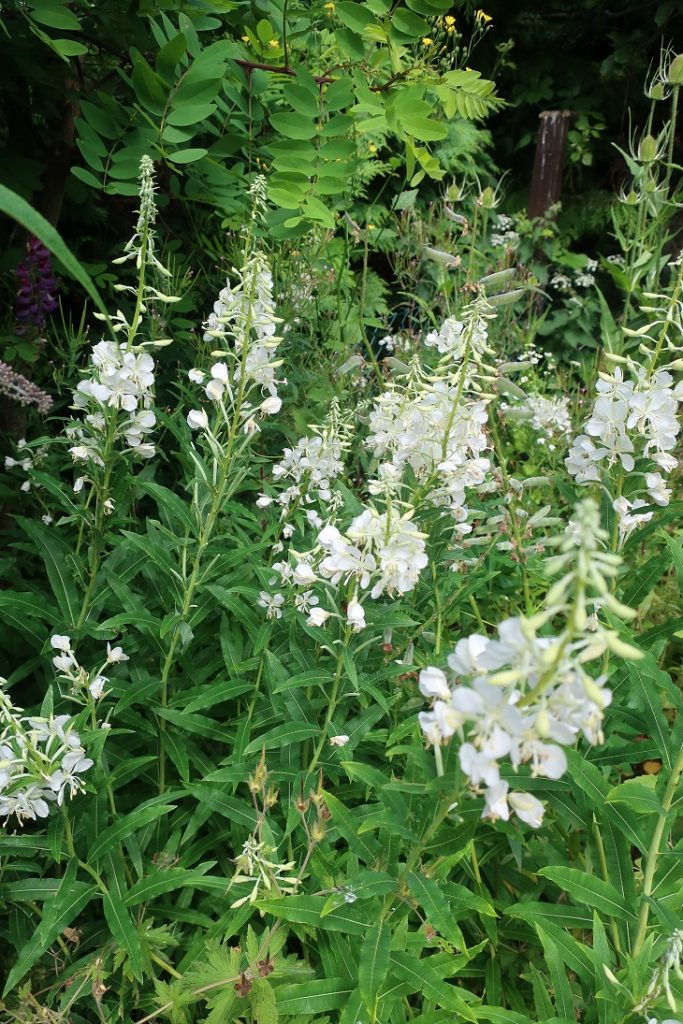
Spanish/Portuguese Heath.
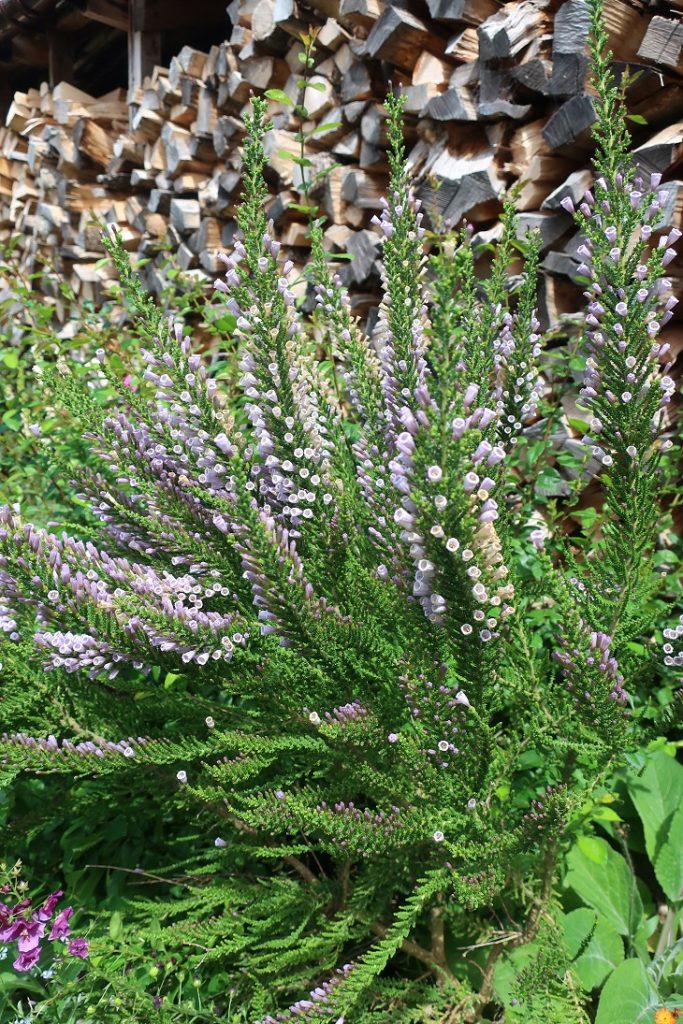
Jackie Elliott and I both bought one of these Spanish heaths, Erica lusitanica, when we were on a course down south several years ago. Hers has disappeared but mine is thriving because it is an acid soil loving plant. We didn’t know this till I started researching it the other day. I treated mine to a bag of pony manure earlier in the year and have been rewarded by lots of flowers that attracts honey bees, hover flies and bumble bees. I like having flowering shrubs because they are better value than single flowers and tend to flower over longer periods. These heaths can grow to around 2.5 m tall.
E. lusitanica is named after Lusitania which is an historical region that includes most of modern Portugal and parts of Western Spain. Being a member of the Ericacea family is thrives in acid soil. Its leaves are small and rather like pine needles. They are around 4-7mm long. This is an evergreen shrub with small rounded bell shaped flowers which can be white, pink, or mauve like mine. The small seeds are dispersed by the wind and rain and in countries like Australia and New Zealand it is a nuiscance and interferes with the environment. Tasmania regards it as an environmental weed and takes steps to eradicate it.
Here in the UK, Spanish heath has won a Royal Horticultural Award of Garden Merit and has become naturalised in some parts of the country when it has ecaped from cultivated gardens . You can propagate it by taking cuttings at the end of summer apparently.
Wild Corners.
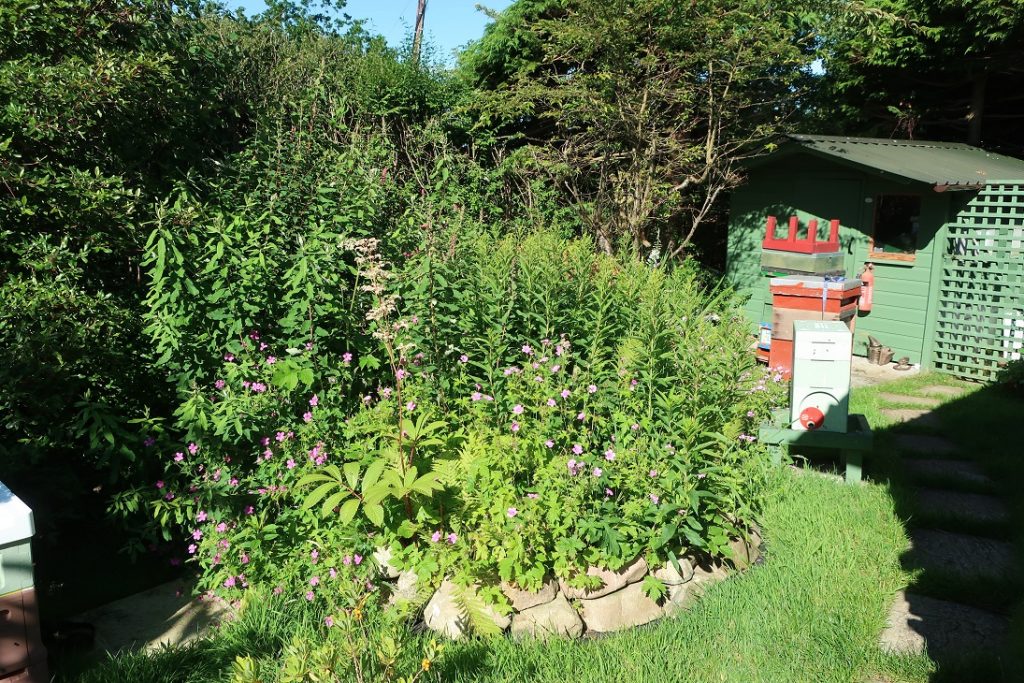
This little bed is full of goldenrod, purple loosetrife and geraniums. It has been neatly edged with slates and stones by Linton to make lawn mowing easier. This bed started out as a damp bog garden which I painstakenly excavated by hand before laying down plastic bags. It worked well for a few years and irises flourished but it has evolved to look like this and I’m pleased with it now. If you look very closely you can see a squirrel tail sticking out from the tree near the shed. It is in line with the white willowherb.
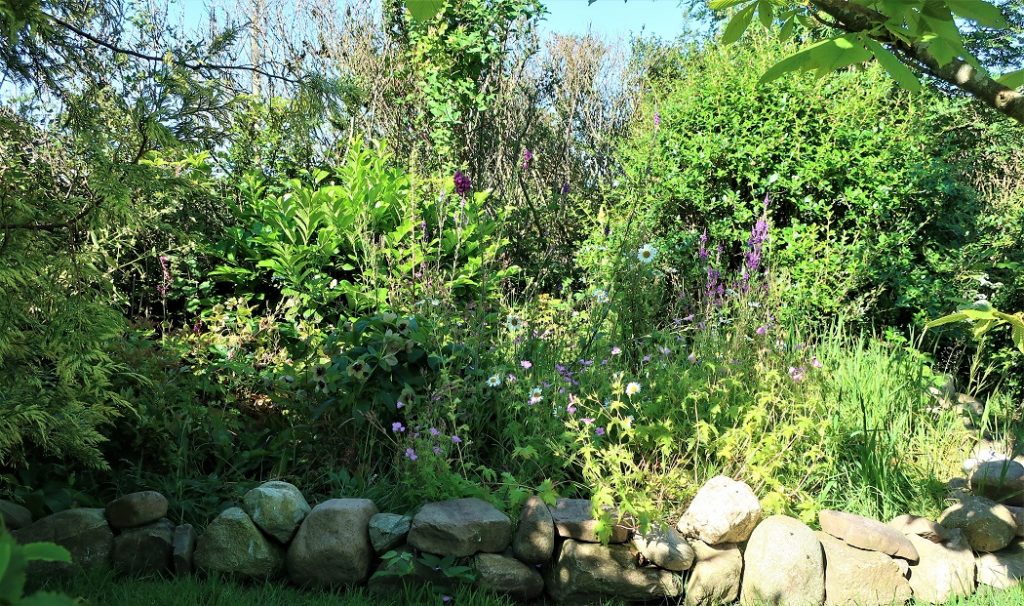
Professional gardener Anna Maria David designed and made this bed, in the corner of the front garden, filling it with plants as a thank you for looking after 2 colonies of bees for a couple of seasons.
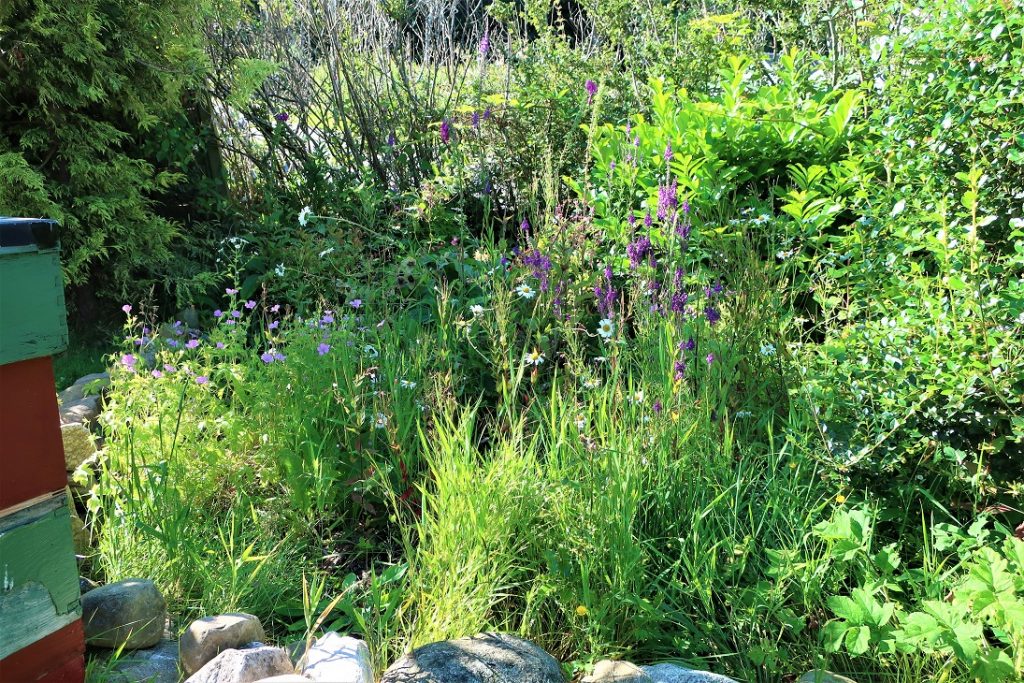
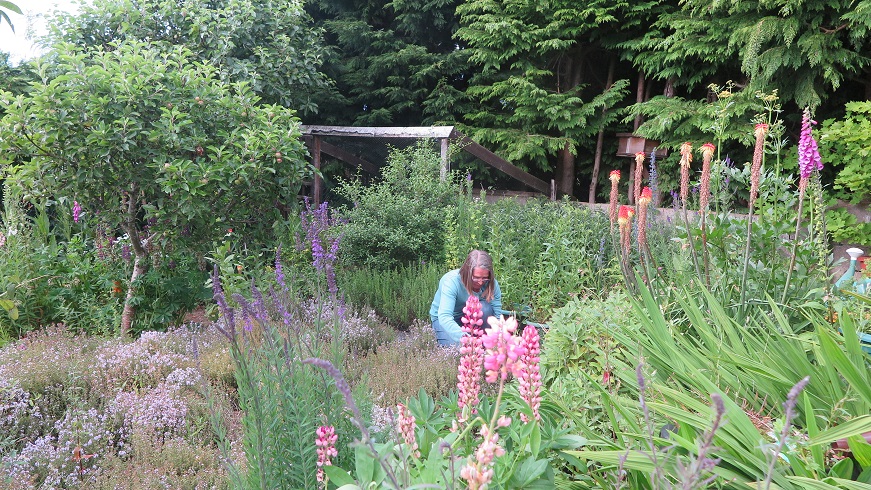
You can see one of the thyme beds on the left which is very popular and twitches with honey bees on a good day.
Deck Chair v Trug and Tools.
A small boy visiting the bees and exploring the garden one summer told me he liked it because it was like being in a jungle.
While many other people are labouring away on summer evenings keeping their gardens tidy, I’m sitting in the back apiary getting the evening sun and watching the bees fly home against a golden backdrop.

We have a wonderful wild flower heritage to preserve, Ann and you are well and truly doing your share. We only grow potatoes in the vegetable garden now as it is being invaded by wild rabbits. We have to grow vegetables in big wire cages surrounded by paving slabs now. Wild fuchsia and flowers are thriving in the kitchen garden instead. Be careful not to get a foot under a bramble shoot especially when Linton is away; (I fell over three times last year because they were hiding along the ground; on one occasion I had difficulty getting up again.)
Thanks for the advice, Margaret. I had a rare gardening spree this week and cut out all the trailing bramble shoots I could find.
Thank you for this. I plan to adopt a few of these ideas in favour of my nettle garden.
That’s good, Mac. Nettles will encourage peacock butterflies to lay eggs there but a few more plants wouldn’t go amiss. I have some for you to dig up.